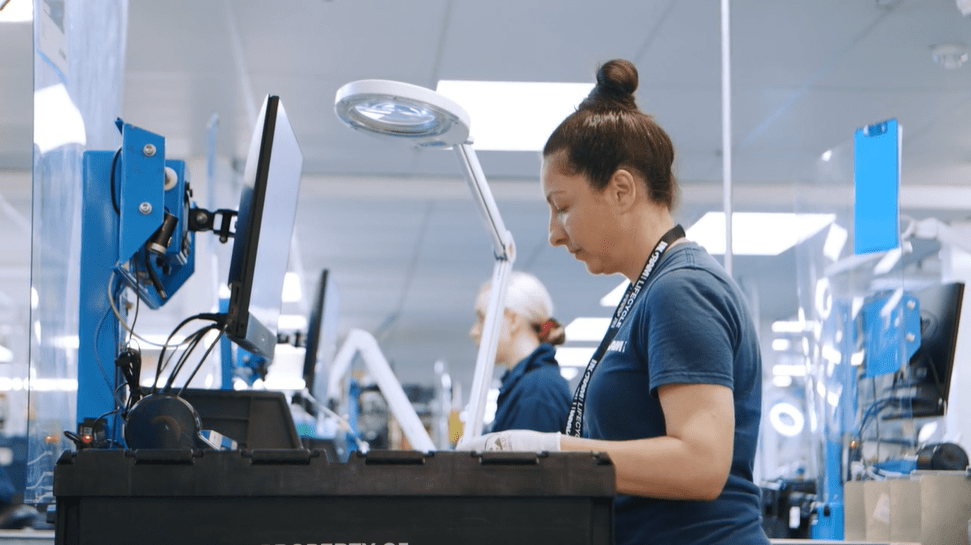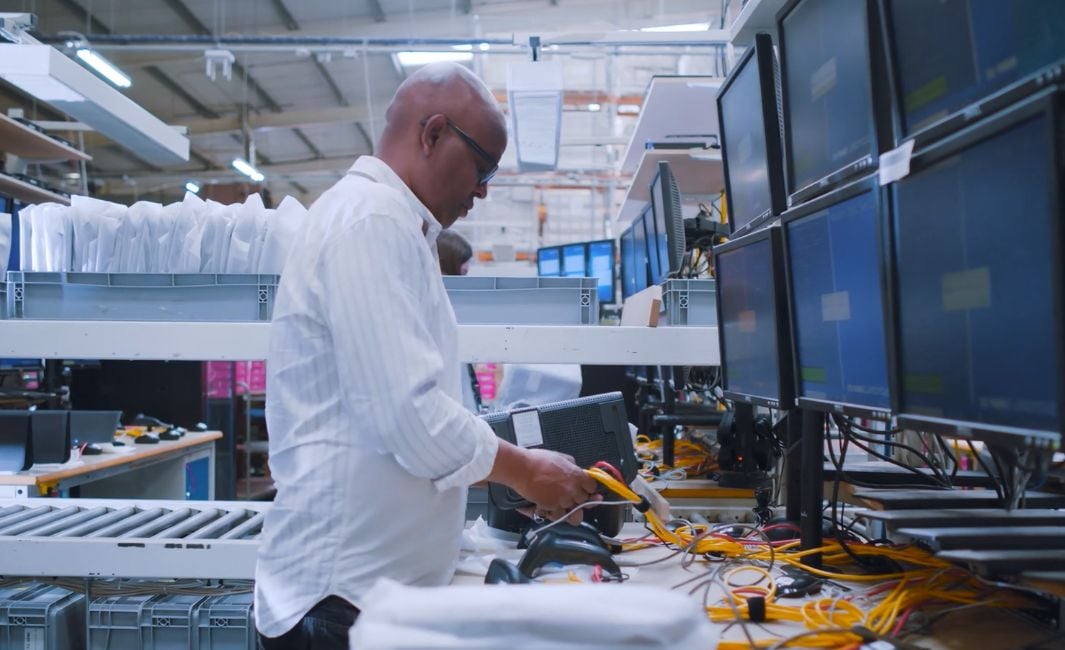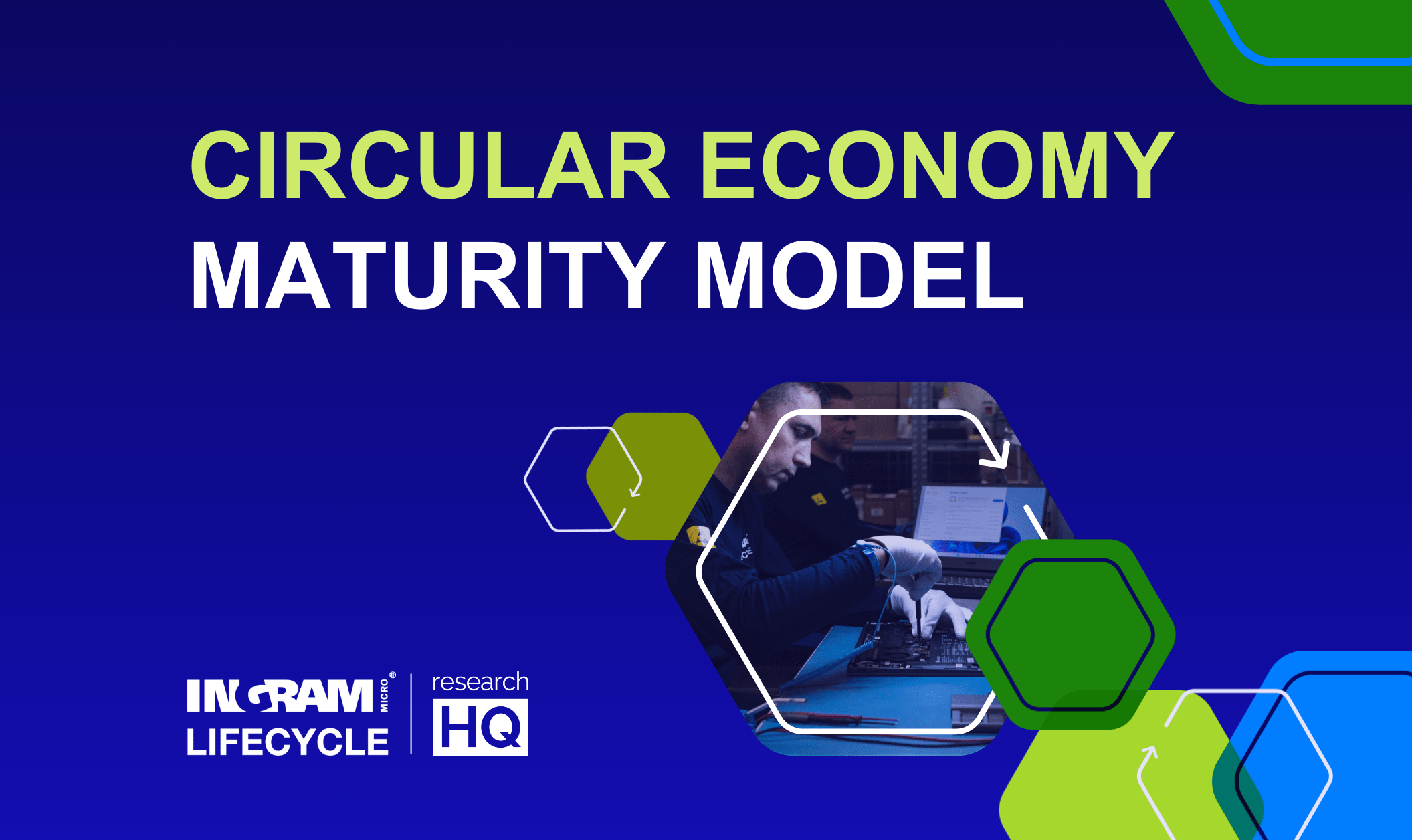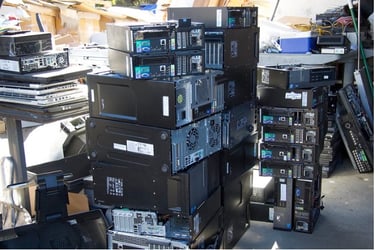International E-Waste Day, observed on October 14th each year, serves as a crucial platform to raise awareness about the growing e-waste problem and encourage sustainable practices.
Ingram Micro Lifecycle provide a breadth of lifecycle extension services to enable a circular economy for consumer technology products. Our end-to-end solutions ensure a reduction of e-waste generation for our customers.
As we recognize International E-Waste Day 2025, we take a closer look at the definition of e-waste, examine the ways our technology consumption shapes this issue, and explore how adopting circular economy strategies can drive meaningful reduction.
Understanding e-waste
E-waste, or electronic waste, refers to discarded electronic devices and appliances that are no longer in use or are deemed obsolete. This category encompasses a wide range of products, including smartphones, laptops, tablets, smartwatches, gaming consoles, and even household appliances like coffee machines and air fryers. Essentially, any electronic device that relies on batteries or a plug falls under the umbrella of e-waste.
The rapid pace of technological advancement and our society's increasing reliance on electronic devices contribute to the growing volume of e-waste. Consumers frequently replace their gadgets to keep up with the latest trends and innovations, resulting in a significant amount of electronic waste. This relentless cycle of consumption and disposal poses substantial challenges for waste management and environmental sustainability.
The environmental and health impacts of e-waste
The informal recycling of e-waste in many parts of the world exacerbates the problem. 18 billion kilograms of e-waste is estimated to be informally handled in lower-income countries. In these regions, lacking the proper infrastructure for safe e-waste processing, individuals often resort to rudimentary methods such as open burning and acid baths to extract valuable materials like gold and copper. These practices expose workers and local communities to harmful chemicals, leading to severe health issues such as respiratory problems, neurological damage, and even cancer.
The improper disposal of e-waste has far-reaching consequences for both the environment and human health. When electronic devices end up in landfill sites, they can release toxic substances such as lead, mercury, cadmium, and brominated flame retardants (BFRs) into the soil and water. These hazardous materials can contaminate natural resources, posing serious risks to ecosystems and human well-being. It is predicted that 58,000 kilograms of mercury and 45 million kilograms of plastics containing BFRs are released into the environment every year, stemming from e-waste.
Addressing the environmental and health impacts of e-waste requires a concerted effort to promote responsible disposal and recycling practices. By raising awareness and implementing effective waste management strategies, we can mitigate the adverse effects of e-waste on our planet and its inhabitants.
Why International E-Waste Day matters
This global initiative, spearheaded by organizations dedicated to electronic waste management, aims to educate individuals, businesses, and governments about the importance of responsible e-waste disposal and recycling.
The significance of International E-Waste Day lies in its ability to mobilize collective action. By highlighting the environmental and health impacts of e-waste, the day encourages stakeholders to adopt measures that reduce e-waste generation and promote the proper handling of discarded electronics. It serves as a reminder that each of us has a role to play in minimizing the negative consequences of electronic waste and fostering a more sustainable future.
The role of technology in e-waste generation
Technological innovation is a double-edged sword when it comes to e-waste. On one hand, advancements in technology drive economic growth and improve our quality of life. On the other hand, the rapid obsolescence of electronic devices contributes to a significant increase in e-waste generation.
Manufacturers often release new models with enhanced features, prompting consumers to upgrade their devices frequently. This culture of constant upgrades and replacements not only generates more e-waste but also depletes valuable natural resources used in the production of electronic goods. Additionally, many devices are not designed with longevity in mind, making them difficult or costly to repair.
To address this issue, it is essential to promote a shift towards sustainable consumption and production patterns. Encouraging the design and manufacture of durable, repairable, and upgradable electronics can help extend the lifespan of devices and reduce the overall volume of e-waste. The Right to Repair campaign is one such scheme to address this. Additionally, raising awareness among consumers about the environmental impact of their purchasing decisions can drive demand for more sustainable technology products.
What is a circular economy?
A circular economy is an economic system that aims to minimize waste and make the most of resources by keeping products and materials in use for as long as possible. Unlike the traditional linear economy, where products are made, used, and disposed of, a circular economy focuses on closing the loop by reintroducing end-of-life products back into the supply chain.
In the context of e-waste, a circular economy involves strategies such as recycling, refurbishing, and remanufacturing electronic devices. By recovering valuable materials from discarded electronics and reusing them in the production of new products, we can reduce the need for virgin resources and decrease the environmental footprint of electronic devices.
The transition to a circular economy requires collaboration among manufacturers, consumers, policymakers, and waste management organizations. By adopting circular practices, we can create a more sustainable and resilient economy that benefits both the environment and society.
How a circular economy reduces e-waste
A circular economy offers a promising solution to the e-waste problem by promoting the efficient use of resources and reducing the overall volume of waste generated. Here are some key ways in which a circular economy can help mitigate e-waste:
-
Product design and innovation: Designing products with longevity, repairability, and recyclability in mind can significantly extend their lifespan and reduce the need for frequent replacements. Innovations such as modular designs, standardized components, and easy-to-disassemble products can facilitate repairs and upgrades, keeping devices in use for longer periods.
-
Recycling and material recovery: Implementing effective recycling programs can help recover valuable materials from discarded electronics. By extracting and reprocessing metals, plastics, and other components, we can reduce the demand for new raw materials and minimize the environmental impact of mining and manufacturing.
-
Refurbishment and reuse: Refurbishing and reselling used electronic devices can provide affordable alternatives to new products and reduce e-waste generation. Trade-in and buyback programs, as well as certified refurbishment services, can encourage consumers to return their old devices for professional repair and resale.
-
Extended Producer Responsibility: Holding manufacturers accountable for the entire lifecycle of their products can incentivize the development of more sustainable electronics. Extended Producer Responsibility (EPR) policies require manufacturers to take back and manage the disposal or recycling of their products, ensuring that end-of-life devices are handled responsibly.
Extending the life of technology: best practices
Extending the lifespan of technology is a crucial strategy for reducing e-waste and promoting sustainability. Here are some best practices that individuals and organizations can adopt to achieve this goal:
-
Regular maintenance: Keeping electronic devices in good working condition through regular maintenance can prevent premature failures and extend their useful life. Simple actions such as cleaning, updating software, and replacing worn-out components can go a long way in preserving the functionality of devices.
-
Repair and upgrades: When devices encounter issues, opting for same unit repairs instead of replacements can significantly reduce e-waste. Many common problems, such as battery or screen issues, can be fixed by professional repair services. Additionally, upgrading components like memory or storage can enhance the performance of older devices, making them viable for longer use. Use a trusted, accredited partner for repair services to ensure genuine parts to maintain warranty cover.
-
Responsible disposal: When a device reaches the end of its useful life, it is important to dispose of it responsibly. Participating in e-waste recycling programs or returning devices to manufacturers for proper disposal can ensure that valuable materials are recovered and hazardous substances are managed safely.
-
Educating consumers: Raising awareness among consumers about the environmental impact of their technology choices can drive more sustainable behavior. Educating individuals about the benefits of repairing, refurbishing, and recycling electronics can encourage them to make informed decisions that contribute to e-waste reduction.
Support International E-Waste Day
International E-Waste Day on October 14th serves as a vital reminder of the urgent need to address the e-waste problem. By understanding the environmental and health impacts of e-waste and embracing the principles of a circular economy, we can take meaningful steps towards reducing electronic waste and promoting sustainability.
Extending the life of technology through responsible consumption, repair, and recycling practices is essential for mitigating the negative consequences of e-waste. By working together and supporting global initiatives that prioritize circularity, we can create a more resilient and sustainable future for generations to come.
Ingram Micro Lifecycle has the infrastructure and agility to enable enterprises to adopt a circular economy approach within their IT estate. We support three key trends of a circular economy; reuse, remanufacture, and repair.
Get in touch today to discuss our services further.
Related articles:
- Circular Economy 101: Moving Beyond Linear Models
- The Environmental Benefits of Technology Recovery
- Report: Reverse Logistics Sustainability Initiatives
- Steps Your Business Can Take to Reduce E-Waste Contributions
- Circular Economy in the Laptop Market: Assessing Maturity and Driving Progress
- Ensuring Data Security While Maximizing Reuse in a Circular Economy








.jpeg)




.jpg?width=450&height=250&name=electronic-waste-ready-for-recycling-pile-of-used-electronic-and-housewares-waste-division.jpg_s=1024x1024%26w=is%26k=20%26c=BnDjFzMKOiAUmT8y-l4cYaPizJzYfU1JS1QsDz5ApIU=%20(1).jpg)